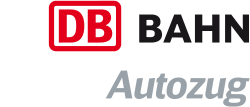History
The first car transported by rail in Germany was carried by the Deutsche Reichsbahn on 1 April 1930. At first only the rich and privileged could afford cars and the market was small. [3] In the 1950s, Britain and France started to run car transporter trains. In the Summer of 1956, the first true car train in Germany ran, via Hamburg, Munich and also Ostend; the drivers travelled in a passenger car, whilst their automobile was carried by the same train. [4] The German economic recovery in the 1960s brought an increase in travel and a corresponding increase in the number of cars transported, increasing eightfold to 80,000 by 1969, many holiday makers travelling to warmer more sunny parts of Europe. [5] The numbers of cars transported peaked in 1973, at 185,550 vehicles; the oil crisis put an end to this growth. In 1978, the Bundesbahn cut back by 40% its number of terminals due to a lack of demand. [6] The increase in car ownership in the 1980s did little to help the rail-car transporter business - changes in lifestyle meant that people often expected to drive their cars all the way to their holiday destination (which represented most of the car by rail business). Additionally, the seasonal nature of the business meant that buying new wagons was not profitable. In this decade the number of people flying over to a holiday overtook those travelling by rail. Also in this decade, the transport of caravans and boats also ceased. [7] After the merger of the Deutsche Bundesbahn and the Deutsche Reichsbahn - in 1996 a new company was formed: DB AutoZug. [8]
Operations
Created in 1997 the DB brand AutoZug was responsible for the companies' private car transportation business. In 1999 the night trains of the Deutsche Bahn including the brands UrlaubsExpress and DB NachtZug also came under the company's control. [9] From 2002, the organisation became DB AutoZug GmbH, and a company in its own right. From 1 January 2003 the Euro Night and D-night trains were the responsibility of DB AutoZug GmbH.
In December 2007 DB NachtZug and UrlaubsExpress were branded together under the new name CityNightLine. At the same time, the number of car-trains was reduced by around 1200 to approximately 920, and four of the nine terminals were closed. 2008 brought the procurement of new-car wagons to replace some of up to 40 years old. [10] 2007, the company transported 183,000 vehicles and generated with a turnover of 60 million euros.
By the 2008 holiday season, further changes in service were made: the terminal in Troisdorf Germany closed, and services to Livorno (Italy), Fréjus (France) and Rijeka (Croatia) no longer in operation, however in Alessandria (Italy) a new terminal came into operation. [11] For holiday travel by car, the market share of the company was less than 0.5 percent, 70% of the customers were regulars, a quarter were pensioners. Statistically, customers had an above average income as of 2008. [12]
This page is based on this
Wikipedia article Text is available under the
CC BY-SA 4.0 license; additional terms may apply.
Images, videos and audio are available under their respective licenses.


